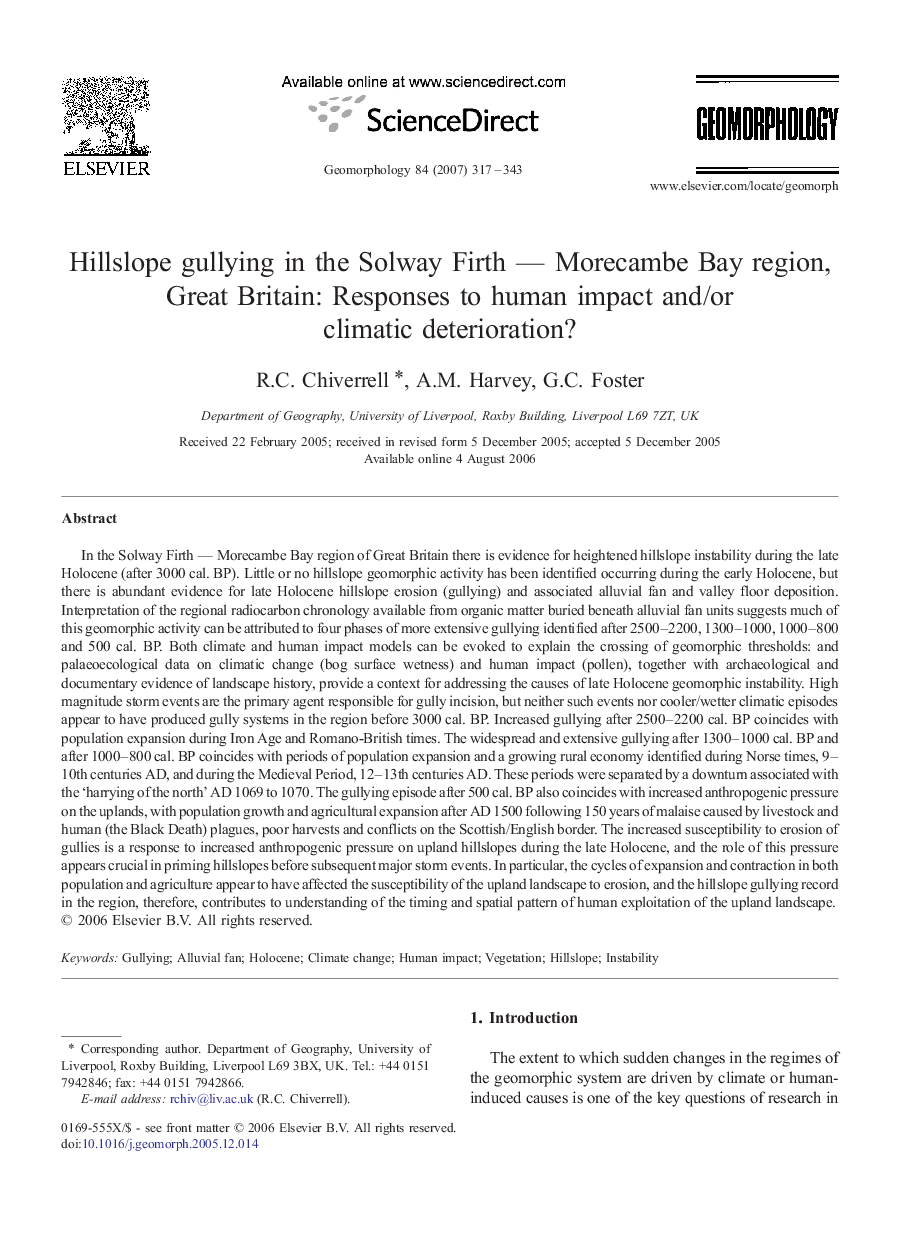| Article ID | Journal | Published Year | Pages | File Type |
|---|---|---|---|---|
| 4687440 | Geomorphology | 2007 | 27 Pages |
Abstract
In the Solway Firth - Morecambe Bay region of Great Britain there is evidence for heightened hillslope instability during the late Holocene (after 3000Â cal. BP). Little or no hillslope geomorphic activity has been identified occurring during the early Holocene, but there is abundant evidence for late Holocene hillslope erosion (gullying) and associated alluvial fan and valley floor deposition. Interpretation of the regional radiocarbon chronology available from organic matter buried beneath alluvial fan units suggests much of this geomorphic activity can be attributed to four phases of more extensive gullying identified after 2500-2200, 1300-1000, 1000-800 and 500Â cal. BP. Both climate and human impact models can be evoked to explain the crossing of geomorphic thresholds: and palaeoecological data on climatic change (bog surface wetness) and human impact (pollen), together with archaeological and documentary evidence of landscape history, provide a context for addressing the causes of late Holocene geomorphic instability. High magnitude storm events are the primary agent responsible for gully incision, but neither such events nor cooler/wetter climatic episodes appear to have produced gully systems in the region before 3000Â cal. BP. Increased gullying after 2500-2200Â cal. BP coincides with population expansion during Iron Age and Romano-British times. The widespread and extensive gullying after 1300-1000Â cal. BP and after 1000-800Â cal. BP coincides with periods of population expansion and a growing rural economy identified during Norse times, 9-10th centuries AD, and during the Medieval Period, 12-13th centuries AD. These periods were separated by a downturn associated with the 'harrying of the north' AD 1069 to 1070. The gullying episode after 500Â cal. BP also coincides with increased anthropogenic pressure on the uplands, with population growth and agricultural expansion after AD 1500 following 150Â years of malaise caused by livestock and human (the Black Death) plagues, poor harvests and conflicts on the Scottish/English border. The increased susceptibility to erosion of gullies is a response to increased anthropogenic pressure on upland hillslopes during the late Holocene, and the role of this pressure appears crucial in priming hillslopes before subsequent major storm events. In particular, the cycles of expansion and contraction in both population and agriculture appear to have affected the susceptibility of the upland landscape to erosion, and the hillslope gullying record in the region, therefore, contributes to understanding of the timing and spatial pattern of human exploitation of the upland landscape.
Related Topics
Physical Sciences and Engineering
Earth and Planetary Sciences
Earth-Surface Processes
Authors
R.C. Chiverrell, A.M. Harvey, G.C. Foster,
